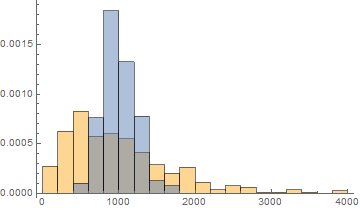safenode v0.83.35 shows the following at the beginning of the log:
[2023-06-20T00:12:23.687797Z DEBUG safenode] Built with git version: 74528f5 / main / 74528f5.
Seems to align with this:
chore(release): sn_cli-v0.77.37/sn_node-v0.83.35/sn_testnet-v0.1.39
Confirmed the md5 hash of the safenode bin downloaded by safeup indeed matches the release bin for v0.83.35 from github page:
safe-build-122:/tmp# cat /tmp/safenode | md5sum <-- downloaded file from github just now
84f97e95924da013f8afb569ee9d79ec -
safe-build-122:/tmp# cat /usr/local/bin/safenode | md5sum <- original downloaded file from safeup
84f97e95924da013f8afb569ee9d79ec -
Summary on safenode v0.83.35 itself on Github Release page shows:
Added
attach payment proof when uploading Chunks
Fixed
reduce churn weight to ~1/2mb
Other
Revert "chore(release): sn_cli-v0.77.1/sn_client-v0.85.2/sn_networking-v0.1.2/sn_node-v0.83.1"
(release) sn_cli-v0.77.1/sn_client-v0.85.2/sn_networking-v0.1.2/sn_node-v0.83.1
Revert "chore(release): sn_cli-v0.77.1/sn_client-v0.85.2/sn_networking-v0.1.2/sn_protocol-v0.1.2/sn_node-v0.83.1/sn_record_store-v0.1.2/sn_registers-v0.1.2"
(release) sn_cli-v0.77.1/sn_client-v0.85.2/sn_networking-v0.1.2/sn_protocol-v0.1.2/sn_node-v0.83.1/sn_record_store-v0.1.2/sn_registers-v0.1.2
(logs) enable metrics feature by default
log msg text updated
making Chunk payment proof optional for now
adding unit tests to payment proof utilities
moving all payment proofs utilities into sn_transfers crate
ReplicationTestNet (last 5 seconds):
[2023-06-07T20:57:13.029193Z TRACE sn_networking::msg] Received request with id: RequestId(69653), req: Cmd(StoreChunk { chunk: Chunk { address: ChunkAddress(84ea47(10000100)..) }, payment: None })
[2023-06-07T20:57:13.029298Z TRACE sn_node::api] Handling request: Cmd(StoreChunk { chunk: Chunk { address: ChunkAddress(84ea47(10000100)..) }, payment: None })
[2023-06-07T20:57:13.029315Z DEBUG sn_node::api] That's a store chunk in for :84ea47(10000100)..
[2023-06-07T20:57:13.030114Z DEBUG sn_networking] Putting data as record, for Key(b"\x84\xeaG\x01\xec\xe5\x8bt\xee\x83\x16r\xf8\xfc\xfb\x8eG\x80\xe1[u\xb3\xc6\xb4\x9e;)\xdd\xb3\xd0\x01G") - length 512016
[2023-06-07T20:57:13.030297Z INFO safenode] Currently ignored node event ChunkStored(ChunkAddress(84ea47(10000100)..))
[2023-06-07T20:57:13.031114Z TRACE sn_record_store] PUT request for Record key: Key(b"\x84\xeaG\x01\xec\xe5\x8bt\xee\x83\x16r\xf8\xfc\xfb\x8eG\x80\xe1[u\xb3\xc6\xb4\x9e;)\xdd\xb3\xd0\x01G")
[2023-06-07T20:57:13.032597Z TRACE sn_record_store] Wrote record to disk! filename: 84ea4701ece58b74ee831672f8fcfb8e4780e15b75b3c6b49e3b29ddb3d00147
[2023-06-07T20:57:13.033018Z INFO sn_networking::event] Dialing 12D3KooWSxLmxbx3PmUDBkFmrov98Yt3xmYNwuqodzUaDZkSTe49
[2023-06-07T20:57:13.033153Z INFO sn_networking::event] Dialing 12D3KooWNxaZaV6Gj7BgPw5K1We3fL3aVaw3DGx1QY9PcpRhPbJT
[2023-06-07T20:57:13.033297Z INFO sn_networking::event] Dialing 12D3KooWRZX3otk1w3VfBBqgvTNJceni3muzidLr84q9FDKJ5aua
[2023-06-07T20:57:13.033455Z TRACE sn_networking::msg] ResponseSent for request_id: RequestId(69653) and peer: PeerId("12D3KooWC6wddzjx5YVWVJqUzkkFCcDSdTJywsXXittUCL7Z9EwR")
safenode under InstallNet (v0.83.35) (last 5 seconds):
[2023-06-20T14:14:01.590129Z INFO sn_networking::event] identify: Sent { peer_id: PeerId("12D3KooWGVYzDEYFDUh54uHmUxqWk5BV8asBq972HPxLyMPzN3LF") }
[2023-06-20T14:14:01.938048Z INFO sn_networking::event] identify: received info peer_id=12D3KooWMwN4GAeSwer4bpz1jyRPC6KaZTHCsANDZLgL1F1zP4iW info=Info { public_key: Ed25519(PublicKey(compressed): b4172eb27da3126bceec25dbe3e56d252ded9cb581b53e87d735ec3642c2553), protocol_version: "safe/0.1.10", agent_version: "safe/node/0.1.10", listen_addrs: ["/ip4/127.0.0.1/tcp/45087", "/ip4/10.16.0.109/tcp/45087", "/ip4/10.131.0.105/tcp/45087", "/ip4/178.62.88.143/tcp/45087", "/ip4/178.62.88.143/tcp/45087", "/ip4/10.131.0.105/tcp/45087"], protocols: ["/safe/1", "/ipfs/kad/1.0.0", "/ipfs/id/1.0.0", "/ipfs/id/push/1.0.0", "/libp2p/autonat/1.0.0"], observed_addr: "/ip4/X.X.X.X/tcp/X" }
[2023-06-20T14:14:01.946055Z INFO sn_networking::event] identify: received info peer_id=12D3KooWJSS9axpyKu5EK1XnL1vp5zVsLB1jpM7Xj5QhdMVuwzGw info=Info { public_key: Ed25519(PublicKey(compressed): 801ae79f5d3931132297265d8d478c3462cc35ca590a9be18ea86043bded0), protocol_version: "safe/0.1.10", agent_version: "safe/node/0.1.10", listen_addrs: ["/ip4/127.0.0.1/tcp/39853", "/ip4/178.62.17.148/tcp/39853", "/ip4/10.131.0.118/tcp/39853", "/ip4/10.16.0.122/tcp/39853", "/ip4/10.131.0.118/tcp/39853", "/ip4/178.62.17.148/tcp/39853"], protocols: ["/safe/1", "/ipfs/kad/1.0.0", "/ipfs/id/1.0.0", "/ipfs/id/push/1.0.0", "/libp2p/autonat/1.0.0"], observed_addr: "/ip4/X.X.X.X/tcp/X" }
[2023-06-20T14:14:01.949386Z INFO sn_networking::event] identify: received info peer_id=12D3KooWGVYzDEYFDUh54uHmUxqWk5BV8asBq972HPxLyMPzN3LF info=Info { public_key: Ed25519(PublicKey(compressed): 63301699a99f3b7192d1b47e135983013bfd935087942668947dcb47a23c), protocol_version: "safe/0.1.10", agent_version: "safe/node/0.1.10", listen_addrs: ["/ip4/127.0.0.1/tcp/42433", "/ip4/10.16.0.79/tcp/42433", "/ip4/10.131.0.75/tcp/42433", "/ip4/206.189.127.64/tcp/42433", "/ip4/206.189.127.64/tcp/42433", "/ip4/10.131.0.75/tcp/42433"], protocols: ["/safe/1", "/ipfs/kad/1.0.0", "/ipfs/id/1.0.0", "/ipfs/id/push/1.0.0", "/libp2p/autonat/1.0.0"], observed_addr: "/ip4/X.X.X.X/tcp/X" }
[2023-06-20T14:14:03.535628Z DEBUG sn_networking::event] KademliaEvent ignored: InboundRequest { request: FindNode { num_closer_peers: 8 } }
[2023-06-20T14:14:04.959688Z TRACE sn_record_store] PUT request for Record key: Key(b"2\x11\xe9\xcf\x9b-\xd5\xdc\xb7\xf1v\x84\xfa\xb9\x0fd\xb8\x18Q\xc1\xaaC[O(H\xe7/\x1b\x8a\x14\x01")
[2023-06-20T14:14:04.961429Z TRACE sn_record_store] Wrote record to disk! filename: 3211e9cf9b2dd5dcb7f17684fab90f64b81851c1aa435b4f2848e72f1b8a1401
[2023-06-20T14:14:04.961484Z DEBUG sn_networking::event] KademliaEvent ignored: InboundRequest { request: PutRecord { source: PeerId("12D3KooWJAeXzoG76Y8sSQsqhCpZto6HtcTNr23ygHDUrwso3ys7"), connection: ConnectionId(40744), record: None } }
[2023-06-20T14:14:06.077245Z DEBUG sn_logging::metrics] PID: 36112 {"physical_cpu_threads":4,"system_cpu_usage_percent":3.8849647,"system_total_memory_mb":6895.4355,"system_memory_used_mb":217.89491,"system_memory_usage_percent":3.1599874,"network":{"interface_name":"eth0","bytes_received":554785,"bytes_transmitted":548799,"total_mb_received":952.6531,"total_mb_transmitted":4599.871},"process":{"cpu_usage_percent":1.210898,"memory_used_mb":38.600704,"bytes_read":0,"bytes_written":532480,"total_mb_read":0.049152,"total_mb_written":122.200066}},
Note: I do see a ConnectionId, but that might be new, but a scan for that reveals only 1 line in the entire log and that with a request of type PutRecord. Hmm.




